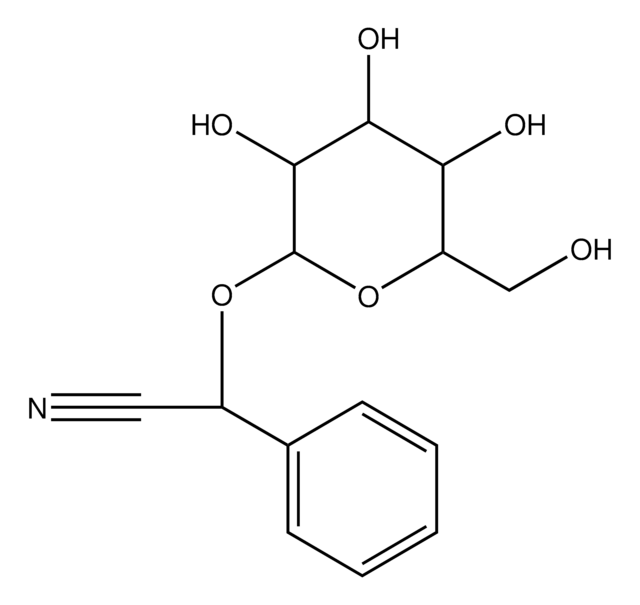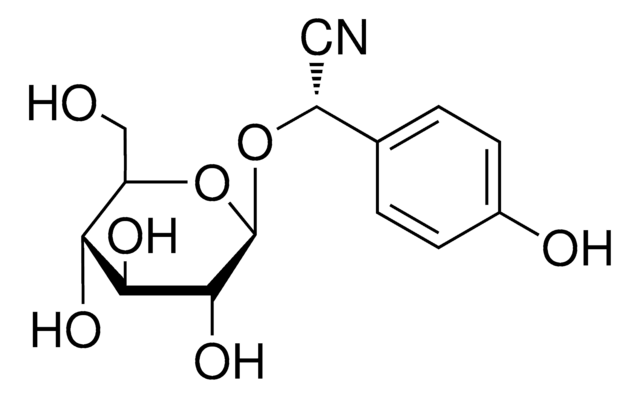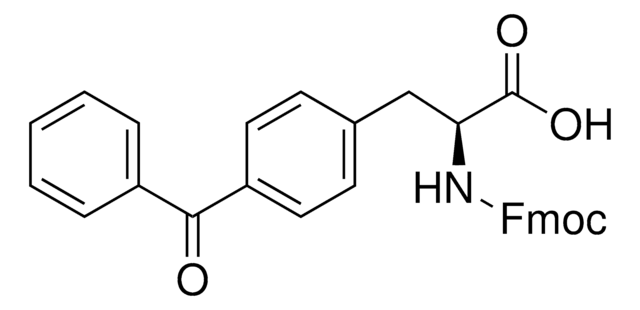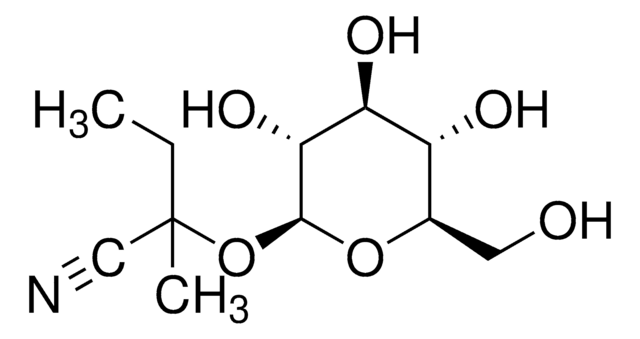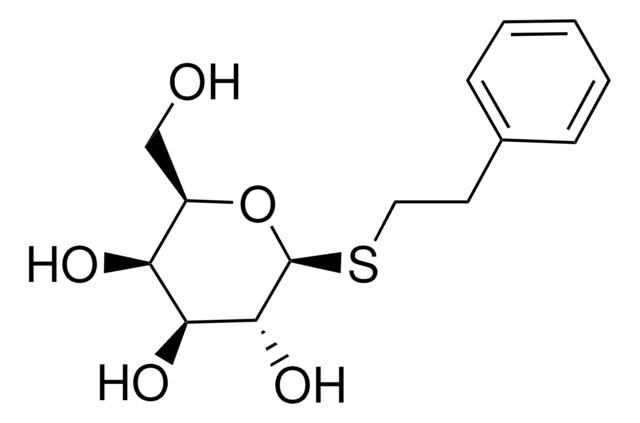10050
Amygdalin
BioXtra, ≥97.0% (HPLC)
Sinonimo/i:
D-Mandelonitrile 6-O-β-D-glucosido-β-D-glucoside, D-Mandelonitrile-β-gentiobioside, Amygdaloside, Laetrile
About This Item
Prodotti consigliati
Origine biologica
synthetic
Nome Commerciale
BioXtra
Saggio
≥97.0% (HPLC)
Forma fisica
powder
Attività ottica
[α]20/D −39±2°, c = 2% in H2O
tecniche
HPLC: suitable
Perdita
≤7.5% loss on drying, 110 °C
Colore
white to off-white
Solubilità
H2O: 0.1 g/mL, clear to very faintly turbid, colorless (hot)
Anioni in tracce
chloride (Cl-): ≤50 mg/kg
sulfate (SO42-): ≤300 mg/kg
Cationi in tracce
Ca: ≤30 mg/kg
Cd: ≤5 mg/kg
Co: ≤5 mg/kg
Cr: ≤5 mg/kg
Cu: ≤5 mg/kg
Fe: ≤5 mg/kg
K: ≤300 mg/kg
Mg: ≤5 mg/kg
Mn: ≤5 mg/kg
Na: ≤50 mg/kg
Ni: ≤5 mg/kg
Pb: ≤5 mg/kg
Zn: ≤5 mg/kg
Stringa SMILE
OC[C@H]1O[C@@H](OC[C@H]2O[C@@H](OC(C#N)c3ccccc3)[C@H](O)[C@@H](O)[C@@H]2O)[C@H](O)[C@@H](O)[C@@H]1O
InChI
1S/C20H27NO11/c21-6-10(9-4-2-1-3-5-9)30-20-18(28)16(26)14(24)12(32-20)8-29-19-17(27)15(25)13(23)11(7-22)31-19/h1-5,10-20,22-28H,7-8H2/t10?,11-,12-,13-,14-,15+,16+,17-,18-,19-,20-/m1/s1
XUCIJNAGGSZNQT-SWRVSKMJSA-N
Cerchi prodotti simili? Visita Guida al confronto tra prodotti
Applicazioni
Azioni biochim/fisiol
Altre note
Avvertenze
Warning
Indicazioni di pericolo
Consigli di prudenza
Classi di pericolo
Acute Tox. 4 Oral
Codice della classe di stoccaggio
11 - Combustible Solids
Classe di pericolosità dell'acqua (WGK)
WGK 3
Dispositivi di protezione individuale
dust mask type N95 (US), Eyeshields, Faceshields, Gloves
Certificati d'analisi (COA)
Cerca il Certificati d'analisi (COA) digitando il numero di lotto/batch corrispondente. I numeri di lotto o di batch sono stampati sull'etichetta dei prodotti dopo la parola ‘Lotto’ o ‘Batch’.
Possiedi già questo prodotto?
I documenti relativi ai prodotti acquistati recentemente sono disponibili nell’Archivio dei documenti.
I clienti hanno visto anche
Il team dei nostri ricercatori vanta grande esperienza in tutte le aree della ricerca quali Life Science, scienza dei materiali, sintesi chimica, cromatografia, discipline analitiche, ecc..
Contatta l'Assistenza Tecnica.
